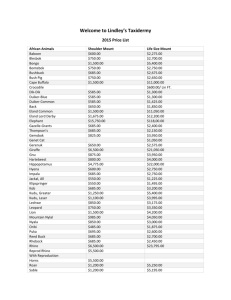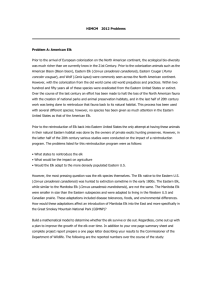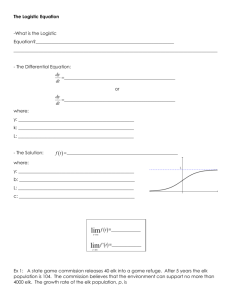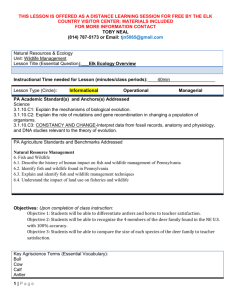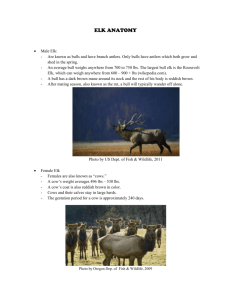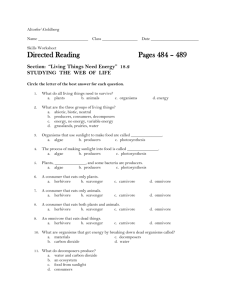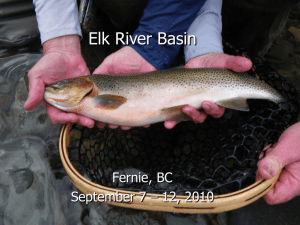Science Project2
advertisement
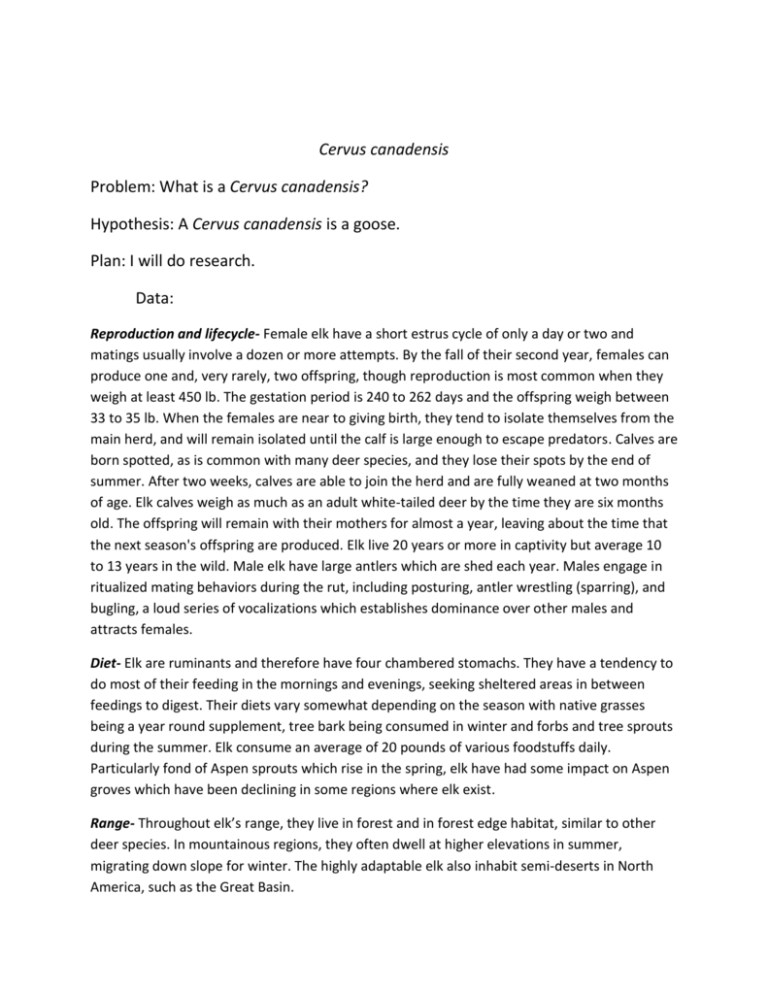
Cervus canadensis Problem: What is a Cervus canadensis? Hypothesis: A Cervus canadensis is a goose. Plan: I will do research. Data: Reproduction and lifecycle- Female elk have a short estrus cycle of only a day or two and matings usually involve a dozen or more attempts. By the fall of their second year, females can produce one and, very rarely, two offspring, though reproduction is most common when they weigh at least 450 lb. The gestation period is 240 to 262 days and the offspring weigh between 33 to 35 lb. When the females are near to giving birth, they tend to isolate themselves from the main herd, and will remain isolated until the calf is large enough to escape predators. Calves are born spotted, as is common with many deer species, and they lose their spots by the end of summer. After two weeks, calves are able to join the herd and are fully weaned at two months of age. Elk calves weigh as much as an adult white-tailed deer by the time they are six months old. The offspring will remain with their mothers for almost a year, leaving about the time that the next season's offspring are produced. Elk live 20 years or more in captivity but average 10 to 13 years in the wild. Male elk have large antlers which are shed each year. Males engage in ritualized mating behaviors during the rut, including posturing, antler wrestling (sparring), and bugling, a loud series of vocalizations which establishes dominance over other males and attracts females. Diet- Elk are ruminants and therefore have four chambered stomachs. They have a tendency to do most of their feeding in the mornings and evenings, seeking sheltered areas in between feedings to digest. Their diets vary somewhat depending on the season with native grasses being a year round supplement, tree bark being consumed in winter and forbs and tree sprouts during the summer. Elk consume an average of 20 pounds of various foodstuffs daily. Particularly fond of Aspen sprouts which rise in the spring, elk have had some impact on Aspen groves which have been declining in some regions where elk exist. Range- Throughout elk’s range, they live in forest and in forest edge habitat, similar to other deer species. In mountainous regions, they often dwell at higher elevations in summer, migrating down slope for winter. The highly adaptable elk also inhabit semi-deserts in North America, such as the Great Basin. Description- The elk, is one of the largest species of deer in the world and one of the largest mammals in North America and eastern Asia. In the deer family , only the moose, Alces alces (called an "elk" in Europe), is larger, and the sambar deer can rival the Cervus canadensis elk in size. Elk are almost identical to red deer found in Europe, of which they were long believed to be a subspecies. However, mitochondrial DNA evidence from 2004 strongly suggests they are a distinct species. Habitat- Habitats are always changing - seasonally, annually and over longer periods. Such changes can be the result of seasons, natural catastrophe (flood, drought, tornado, wildfire, etc.), plant succession (a field growing up to forest, for example) or human action. While the number of animals that any habitat can support always is limited, the actual population can sometimes vary drastically over time. Common names- American Elk (Cervus americanus), Roosevelt’s Elk (Cervus roosevelti), Tule Elk Cervus nannodes) are all common names to the Elk (Cervus canadensis). Though, there are many more. Unique Facts- Male elk antlers are generally 10% larger than female antlers. Bull elk shed their antlers once a year. New antlers are covered with velvet, a fuzzy skin that carries oxygen and nutrients to the growing bones. The antlers of a mature bull can weigh up to 40 pounds. Also, elk are prey for wolves, coyotes, cougars, mountain lions and bears both grizzly and black. Conclusion: A Cervus canadensis is an elk. Therefore, my hypothesis was incorrect.
